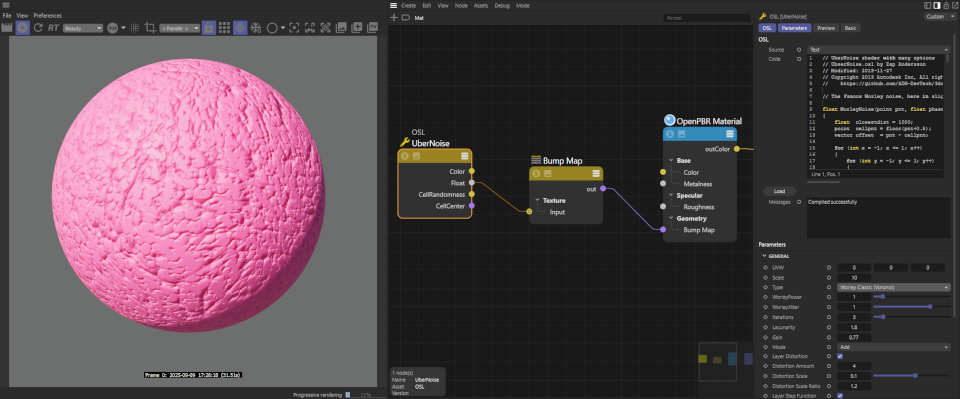Maxon releases Redshift 2026.0

The new Redshift Sun & Sky object, introduced in Redshift 2026.0. Combining the sun and sky means that changes to the sun size are more accurately reflected within a scene.
Maxon has released Redshift 2026.0, the latest version of the GPU renderer for VFX, motion graphics and visualization work.
The update adds a new Redshift Sun & Sky light, a new volumetric clouds system, and makes Redshift fully scene-unit-aware, making it easier to set up lighting and shading consistently.
New Redshift Sun & Sky and Clouds object
Redshift 2026.0 overhauls the way in which the renderer handles the sky in exterior scenes, with a new unified sun and sky, and a new Clouds object.
The new Redshift Sun & Sky combines the sun and sky in a single object, and functions like a dome light, rather than the old approach of an infinite light and an environment light.
According to Maxon, combining the sun and sky means that changes to the size of the sun are more accurately reflected in the scene, particularly on specular reflections.
The new approach also works better with Brute Force Caustics.
Otherwise, the Redshift Sun & Sky uses the same PRG Clear Sky model as the existing Physical Sun directional light, and provides similar controls, including support for light linking.
For clouds, a new Clouds volume generates clouds procedurally, based on noise shaders.
It has two modes: Fast Clouds, which renders as a background shader, and slower-rendering but more realistic Volumetric Clouds, which allow for full volumetric multi-scattering.
There are a range of parameters to control the shape and position of the clouds; and to animate them using wind speed and direction controls.
Both the Redshift Sun & Sky and Clouds volume are available in all editions of Redshift except Maya: Maxon says that they will be added to Maya in the next release.
Better handing of scene units simplifies lighting and shading
The other key change in Redshift 2026.0 is that the software is now fully scene-unit-aware.
Materials with parameters that describe physical shading features, like subsurface scattering, are now fixed in centimeters, or other relevant units.
Parameters that describe a length, but which are not directly tied to a physical feature – for example, Max Distance for ambient occlusion – use scene units.
A new Unit Conversion node makes it possible to change the units used by a parameter.
According to Maxon, the change makes “a lot of things easier to deal with”, particularly the import and export of proxies.

Better bump mapping via support for OSL Derivatives
The update also reworks Redshift’s handing of bump mapping, which now maintains bump detail and sharpness regardless of camera position and render resolution.
The change was made possible via support for Open Shading Language’s derivatives functions.
The UI for global fog has been overhauled to make it easier to work with, with new default settings and a distance-based control.
Individual host apps: Distorter Shader now available in 3ds Max, Maya, Houdini and Katana
In addition, the Distorter Shader, which warps one texture based on another texture, is now available in all host applications, not just in Cinema 4D.
Redshift for Maya now also supports USD Variants for Materials and Objects.
Price and system requirements
Redshift 2026.0 is compatible with Windows 10+, glibc 2.28+ Linux and macOS 14.0+. In the release notes, the update is also referred to as ‘Redshift 2025.09’.
The renderer’s integration plugins are compatible with 3ds Max 2018+, Cinema 4D 2023+, Houdini 19.0+, Katana 5.0+ and Maya 2018+ (Maya 2022+ on Linux).
Development of the Blender plugin has been ‘paused’, so the update is not available for Blender.
The software is rental-only. Subscriptions cost $49/month or $289/year.
Read a full list of changes in Redshift 2026.0 on the Redshift forum
(Login required)
Have your say on this story by following CG Channel on Facebook, Instagram and X (formerly Twitter). As well as being able to comment on stories, followers of our social media accounts can see videos we don’t post on the site itself, including making-ofs for the latest VFX movies, animations, games cinematics and motion graphics projects.
